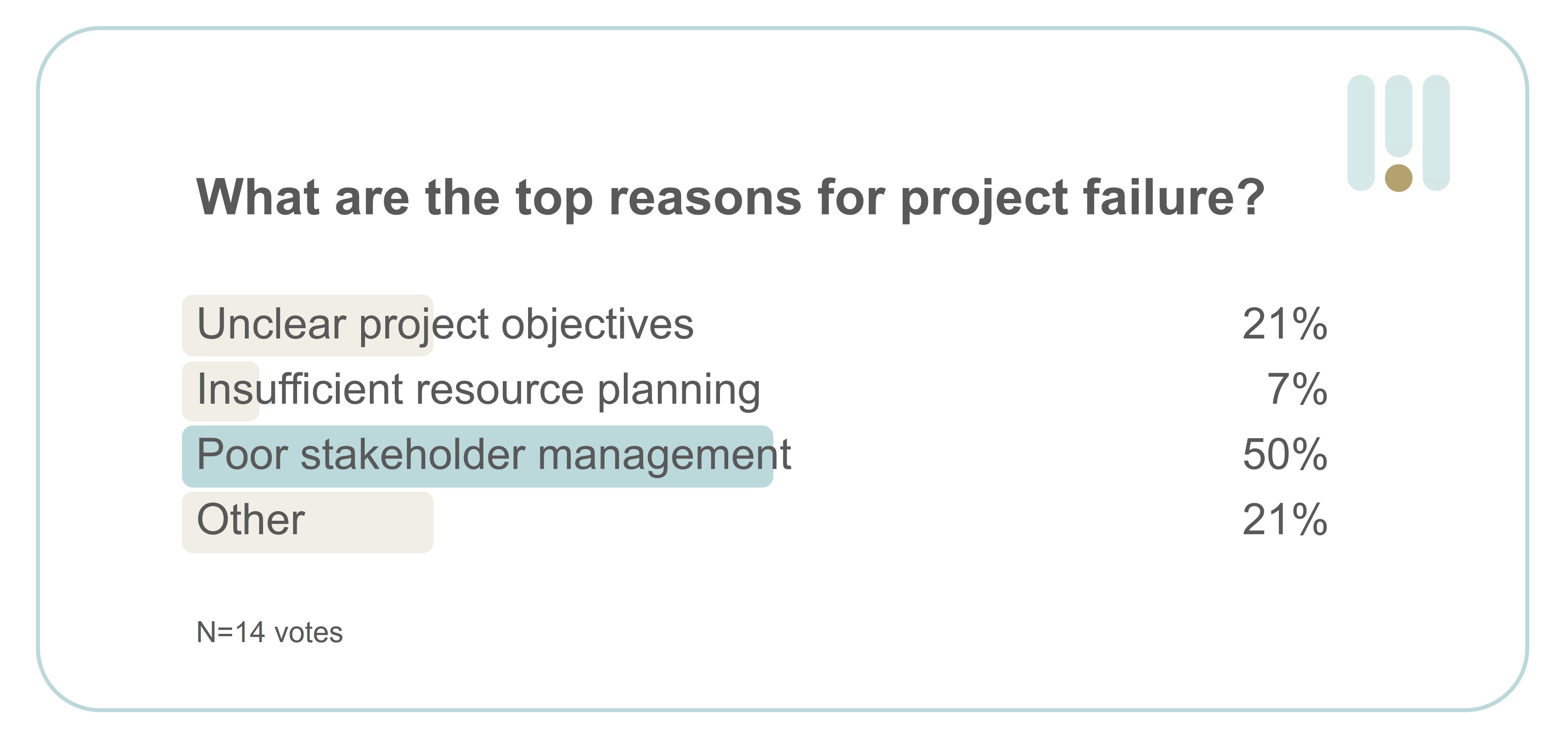The human factor as key for project success

Although processes are being defined, new project methodologies are available and great digital tools are being implemented, it seems that stakeholder management (e.g. poor alignment, wrong understanding/interpretation, discrepancy in expectations etc.) still remains a challenge. A recent LinkedIn poll revealed that 50% believe that poor stakeholder management is a key factor for project failure.
So how do we overcome this and how do we better manage our stakeholders? Here are three tips from our side:
1 — STAKEHOLDER MAPPING
Often seen as an unnecessary step, it helps project leaders and the whole team to understand who the stakeholders are, their interests, and their influence. This helps you to define an efficient communication plan. Which information is important to whom, at which time and in which format?
2 — TALK
Oral conversations, if applied correctly, are not a loss of time, but an important investment. This has been confirmed to us by most of the stakeholders in the majority of our projects. They highly appreciate the personal conversations as they feel heard! Communication should be a bi-lateral process, to gain insights and transfer information. Or as Jeanne Liedtka, design thinking guru, puts it:
“Talk is the technology of leadership”
3 — ENGAGE
Engagement means participation. Alignment usually requires going through several review circles. Although it’s an investment of both time and energy, it’s worth it. Empower your team to define the how and frequently invite the outer circle to provide feedback and share their e.g. user or business perspective.
The larger your project, the bigger the likelihood of failure. A larger project also usually mean higher costs, increasing the impact of failure. Therefore, consider stakeholder management as an important project leadership task. Be sure to identify and mitigate also stakeholder risks early on and continuously throughout your project.
Other news & events
- All posts
- Case Studies
- Events
- Insights
- News